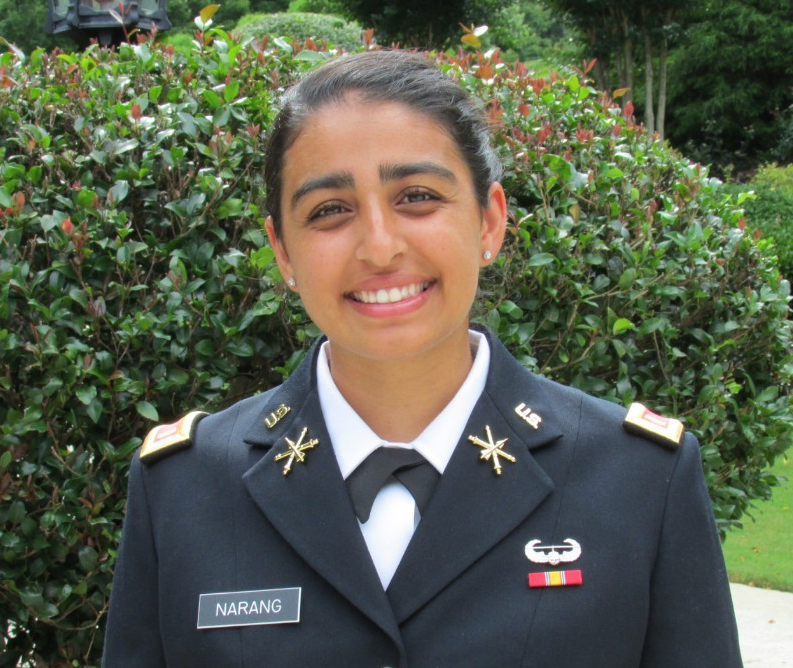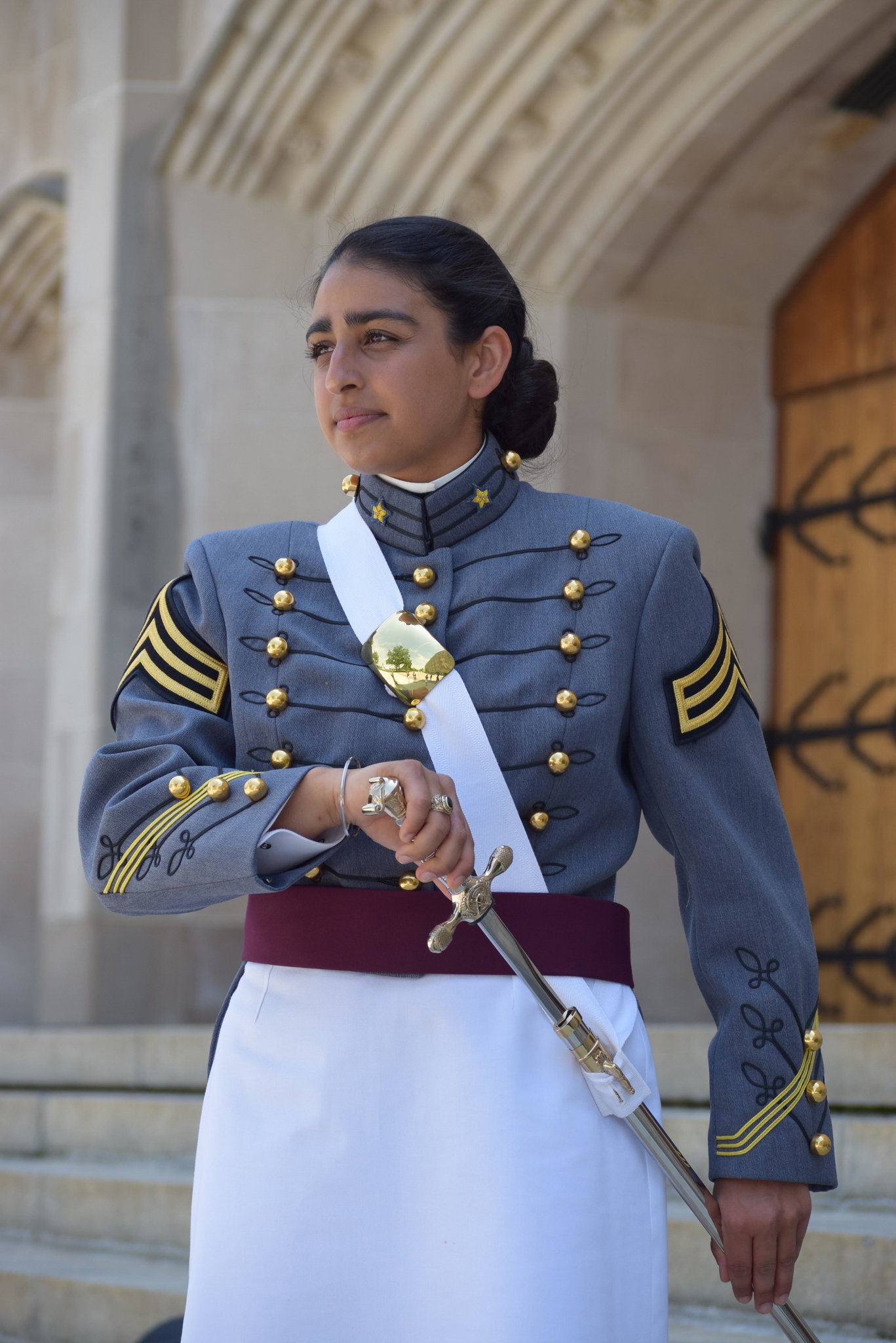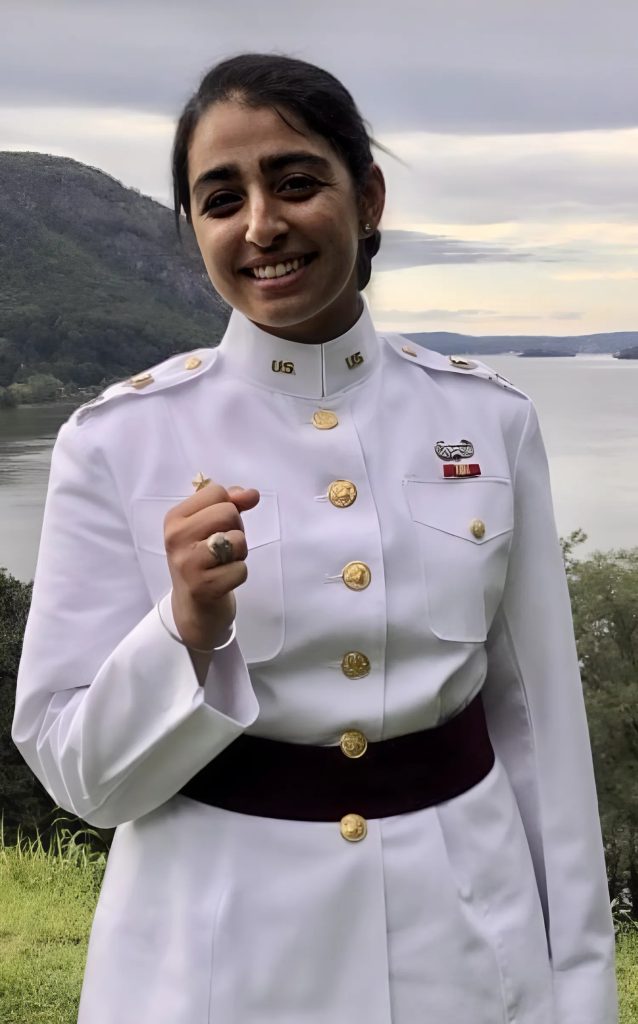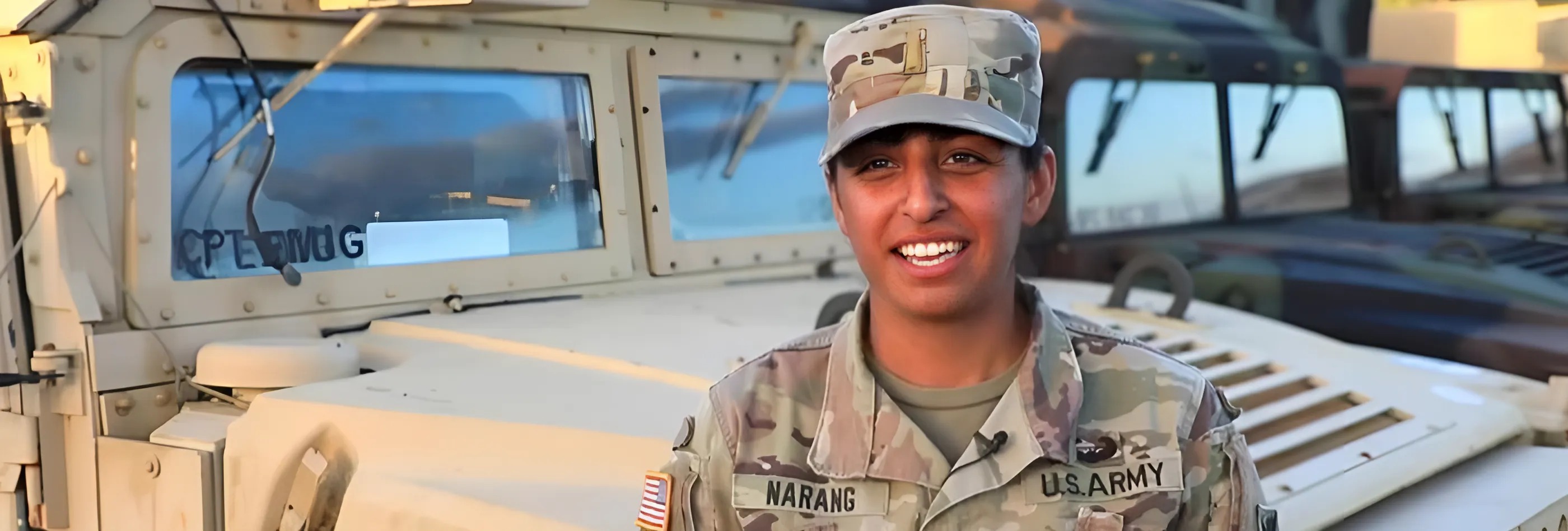(July 5, 2024) The U.S. has an estimated 750,000 Sikh-Americans. Anmol Narang made history when, at the age of 23, she became the first observant Sikh to graduate from the U.S. Military Academy, West Point in 2020. It was a dream come true for the young officer to pass out from the most famous military academy in the world with more than a 200-year-old history.
As the saying goes, ‘where there is a will, there is a way’, she recalled mailing her application to West Point, the military academy in the US from a hotel in Hawaii during her junior year of high school. She had just visited the Pearl Harbor National Memorial there and had felt inspired to serve.
“Gender and religion do not hinder a person’s ability to be successful,” Anmol said, adding, “That’s the great thing about the United States military is that it brings together people from all corners of the world.”

Anmol Narang
After completing a rigorous four-year training programme at the 222-year-old U.S. Military Academy, Anmol Narang finished her Basic Officer Leadership Course at Fort Sill in Lawton, Oklahoma. She then reported to Kadena Air Base in Okinawa, Japan, for her first posting, as a second lieutenant. After a year of her posting there, she was conferred the Federally Employed Women (FEW) Meritorious Service Award for her outstanding performance.
Inspired by her grandfather
Growing up in Roswell, Georgia, Anmol found the real stories her maternal grandfather, a veteran of the Indian Army, “very fascinating.” Her career choice to enter the Army was a natural progression. “The idea of a career in the Army seemed appealing” to her, even when she was young and didn’t know how to make it a part of her life.
Her grandfather, who served in the Indian Army in the 1960s and 70s, instilled in her the values of service and giving back to the community. A visit to the Pearl Harbor National Memorial in Hawaii during a trip strengthened her desire to follow her grandfather’s example. Learning about the sacrifices of service members, and the results of those sacrifices was very impactful on her impressionable mind.


Anmol Narang
When she graduated from the US Military Academy, excited and happy to be fulfilling her dream, she remarked, “The confidence and support of my community back home in Georgia has been deeply meaningful to me, and I am humbled that in reaching this goal, I am showing other Sikh Americans that any career path is possible for anyone willing to rise to the challenge.”
Choosing the air defence branch
Anmol Narang had pursued a year of undergraduate studies at the Georgia Institute of Technology before joining West Point military academy, where she studied nuclear engineering which led her to a career path in air defence.
Upon graduating from the U.S. Military Academy, Anmol chose the air defense branch. “Air defense units play a pivotal role in ensuring a free and open Indo-Pacific region and help ensure that events like the bombing of Pearl Harbor don’t happen again,” Anmol had shared, explaining her choice. She highlighted that she was honoured to share such an important mission in the Pacific with her teammates.
Anmol went on to serve as the fire control platoon leader for Delta Battery, 1-1 ADA (Air Defense Artillery) which consisted of a diverse group of soldiers who operated U.S. Patriot Advanced Capability (PAC-3) systems.


Anmol Narang
Outstanding performance in service
After a year at Kadena Air Base in Japan, Lieutenant Anmol Narang was awarded the Federally Employed Women (FEW) Meritorious Service Award during the annual FEW virtual leadership conference.
FEW’s Military Meritorious Service Awards recognise outstanding military service members within the Armed Forces who have distinguished themselves through significant contributions to their service in the US.
For her consistent engagement with subordinates and mentoring of female soldiers in Delta Battery, she got nominated by one of her mentors, Lt. Col. Rosanna Clemente, former commander of 1-1 ADA, and finally won the award.
Through her journey of becoming the first observant Sikh to graduate from the U.S. Military Academy and her dedicated performance as a soldier, Anmol Narang has been an inspiration for young people to pursue their dreams, regardless of gender or religion.
- Follow Anmol Narang on LinkedIn




